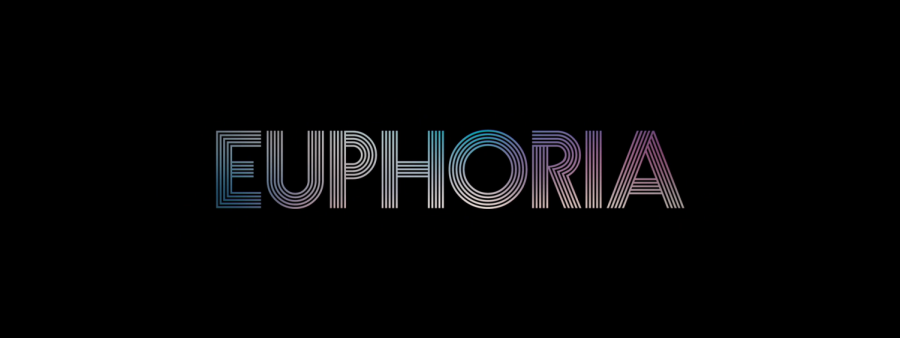A “Euphoric” High School Portrayal
February 17, 2022
Inspired by his own experiences with teenage drug addiction, Sam Levinson’s Euphoria, explores the experiences of Gen-Z high school students and the reality behind modern-day teenage drama. This latest HBO hit series highlights a variety of characters’ angst as they navigate through addiction, relationships, sex, identity, mental health issues, searching for their own euphoria.
Euphoria follows the dark, unsettled life of 17-year-old Rue, a drug addict fresh out of rehab with no intentions of staying sober. Circling in Rue’s world are Jules, a transgender girl who is searching for her purpose in life; Nate Jacobs, a jock who embodies toxic masculinity and was emotionally abused by his father (who is still trying to come to terms with his homosexuality); Cassie, whose sexual history and dramas with her best friend continue to haunt her; Kat, an insecure teen searching for a source of validation; and Lexie, Cassie’s sister and Rue’s childhood friend who tries her best to support Rue through her journey.
Behind the scenes, Levinson aimed to paint the very essence of being a teen who struggles with anxiety, depression, and mental health. Straying away from creating just another idealized version of a high school drama with the sappy breakup plot, he produced a show that teenagers across the globe can resonate with, especially in this interconnected, isolated, digital age. “I was just trying to capture that kind of heightened sense of emotion, when you’re young and how relationships feel,” Levinson told Entertainment Weekly. “Relationships have such a pull and people have such a pull, and the world feels like it’s just constantly sort of bearing down on you and that anxiety and those sort of mood swings that I think are inherent to being young, in general then, but are even more so when you struggle with anxiety and depression and addiction.”
Levinson takes great measures to depict this raw, dangerous, and thrilling aspect of his storyline. With a reputation for its graphic elements, the show is heavy on drugs, alcohol, violence, and entire scenes of nudity and sex. But despite its shocking elements, viewers keep returning—every Sunday at 9 p.m.—to watch the show. These graphic scenes, though, are coupled with constant features of the admirable “Euphoria” aesthetic trending on social media that is characterized by glitter, bright lights, perfection, and beauty. Characters dress in extravagant outfits, wear over-the-top makeup, and drench themselves in glitter, even through their most traumatic moments.
While this aesthetic in no way reflects the characters’ struggles, the show’s aesthetic sparked a cultural fervor among its viewers and Gen Z, inspiring “Euphoria-themed” parties, social-media trends, exaggerated makeup looks, and even went as far as inspiring the beauty industry. According to Vogue, the “the fashion world [couldn’t] get enough of Euphoria makeup,” which made many beauty gurus feel “young, carefree, [and] a little bit reckless,” like an escape from reality.
With more focus on the aesthetic rather than the messages behind the show, controversy arose when viewers began suggesting that the show utilized embellished cinematography to glamorize sensitive topics like drug abuse and violence. According to TMZ, D.A.R.E. argues that the show “chooses to misguidedly glorify and erroneously depict high school student drug use, addiction, anonymous sex, violence, and other destructive behaviors as common and widespread in today’s world,” an intention entirely opposite from the organization’s. But, D.A.R.E. has been around for three decades now, and a slogan that applied to students in 1992 may not be as applicable to a more modernized high school environment. In response to D.A.R.E.’s statement, Zendaya, who plays protagonist Rue, stressed the need to emphasize these topics so that viewers—whether or not they can relate to her character—can empathize with people in her same shoes. The show portrays a teen addict in the “midst of a degenerative disease… [that’s] taking control of her life. And in many ways she feels out of control. She doesn’t have the ability to control her emotions, her body,” she told Entertainment Weekly.
Furthermore, the creators of Euphoria make it clear that they are not trying to promote substance abuse. In fact, every episode begins with a viewer discretion warning, and some end with a list of hotlines, text numbers, and resources. These links, including the Partnership to End Addiction and the Trans Lifeline, encourage those who are struggling to reach out for help. Zendaya also posted several messages on her Instagram: “I hope people really feel something—whoever really truly needs it; needs to see that they’re not alone, that their experiences are valid, and what they’re going through is real, and that they’re not the only person in the world that’s living with what they’re living with.”
But the debate rages on whether Euphoria honestly depicts the teen experience or just some teens’ experiences; whether teens should watch Euphoria to see themselves and feel less alone, or whether watching such behavior only reinforces its normality. Are these experiences inescapable or influential? Is Euphoria commenting on a scary new world teens are facing every day, or merely creating more fear through provocative content teens can’t help but absorb?
One may argue that Euphoria does realistically portray modern-day high school experiences but does so in a raw, uncensored way, which audiences may be unaccustomed to. While Euphoria’s main messages revolve around substance abuse, other characters shed light on very real, often overlooked teenage issues. Maddy and Nate’s relationship touches on physical and verbal abuse, emotional trauma, and domestic violence, as Maddy is trauma-bonded to Nate despite his abusive nature; Kat embodies the theme of toxic positivity, as her mental breakdowns showcase how common it is for teenage girls to feel pressure to conform to unrealistic beauty standards; Lexi exemplifies derealization, as, according to impact, “not identifying with her surrounding was a coping mechanism for getting through emotionally drinking or traumatizing events”; Jules exhibits gender identity issues, as she consistently addresses her struggles with gender dysmorphia as a transgender girl; Cal depicts how generations of internalized homophobia affect LGBTQ+ elders in devastating ways; Cassie represents the need for validation and the teenage struggle of insecurity; Rue’s sister, Gia, models family trauma, and “the burden of trying to hold everyone and everything together.”
Euphoria brings light to modern issues that might be difficult to talk about and even more difficult to mold into a captivating, enjoyable show. While it may seem that it glorifies these topics for entertainment purposes, it all comes down to how the audience chooses to consume the show—whether they strive to mirror the characters or learn from their experiences.
So, what do you think? Is Euphoria a modern-day reality? Does it glorify this lifestyle or accurately depict its dangers?



















































































































































